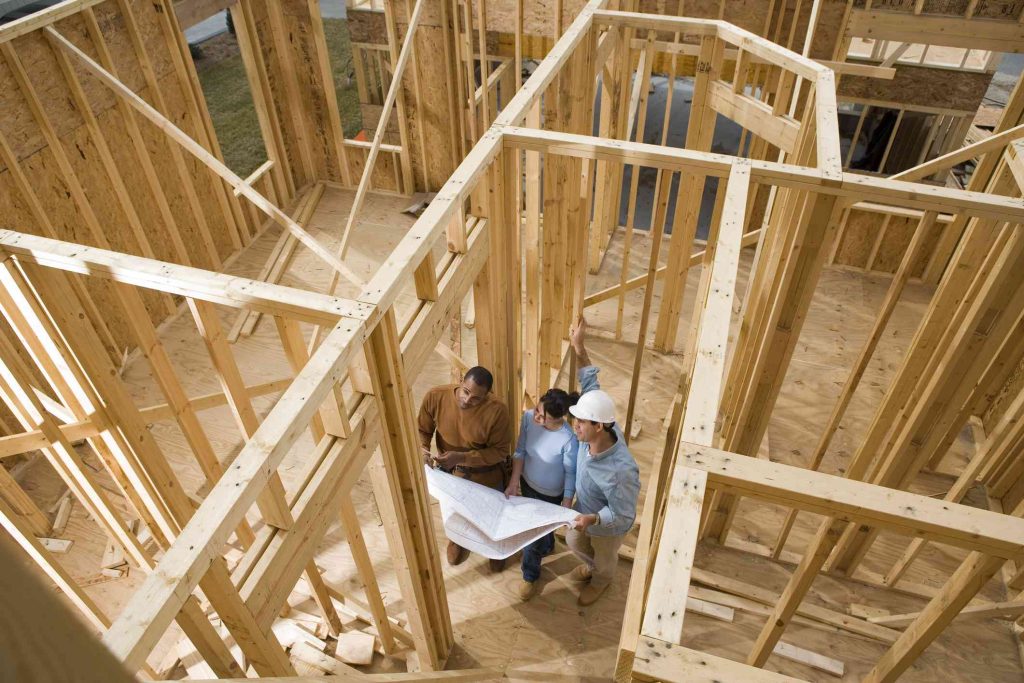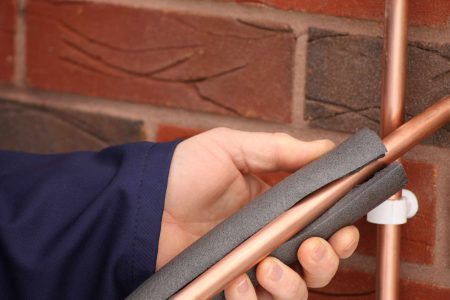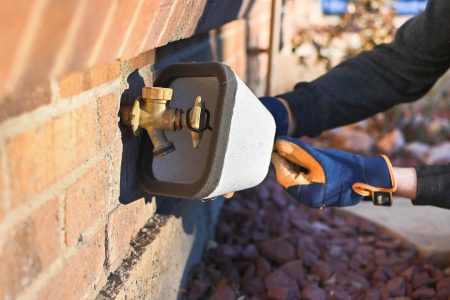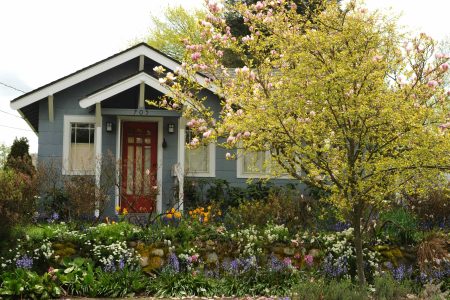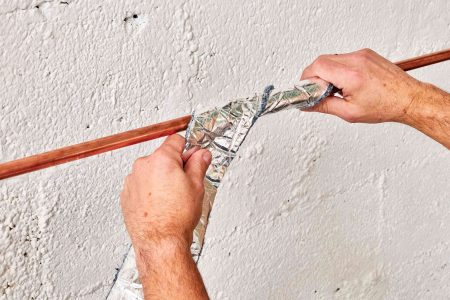How much will your building or remodeling project cost? Maybe less than you think! Here are some ideas for how to cut costs without compromising comfort and beauty.
-
01
of 14Estimate Early
Before you get far in the planning process, start collecting estimates. These early estimates will be approximate, but they can help you make important building decisions. Remember the basics before you build, and understand the process of building and design. Once you know the likely hidden costs, you can modify your plans to meet your budget. You can come closer to estimating building costs when you gather more and more information. Architecture, including home building and renovation, is an iterative process—you’ll come closer and closer to the desired results the more plan versions you go through.
-
02
of 14Beware Budget Building Lots
Where will you build your new home? The cheapest building lot might not be the most affordable. Your costs will soar if your builders have to blast through rock, clear away trees, or provide extensive drainage. Also, be sure to factor in the cost of installing public services and utilities. The most economical building lots are often in developments with access to electricity, gas, and public water lines—unless you plan to live off the grid!
-
03
of 14Choose Simple Shapes
Curves, triangles, trapezoids, and other complex shapes are difficult and expensive to build by your local contractor. Choose square or rectangular floor plans. Avoid cathedral ceilings and complicated roof-lines. The possible exception?
You could forget the box and opt for a dome home, like Solaleya’s Domespace model shown here. “Our designs are guided by nature’s spontaneous proportions (the Golden Number: 1.618) to enhance structural strength and promote a sense of well being,” claims the Solaleya website.
“Think of a soap bubble,” explains Timberline Manufacturing Inc., another maker of geodesic dome kits. “A sphere represents the smallest amount of material surface area needed to enclose a given volume of space…The lower the total outside surface area (walls and ceilings) the greater the efficiency in energy use for heating and cooling. A dome has approximately one-third less surface area to the outside than a box-style structure.”
Geodesic domes and other space-frame structures are often sold as kits, with prefabricated panels and pre-cut and pre-drilled numbered and color-coded parts. As they say, assembly is required.
-
04
of 14Build Small
When you compare costs per square foot, a big house can seem like a bargain. After all, even the smallest house will need high-ticket items like plumbing and heating. But check the bottom line. In most cases, smaller houses are more affordable to build and more economical to maintain. Also, a house that is deeper than 32 feet may require specially-designed roof trusses, which will make your costs go through the roof. To get used to the idea of living small, scour the many books available for cozy, affordable cottages as well as the many, many books about the current trend of building tiny houses.
Continue to 5 of 14 below. -
05
of 14Build Tall
Don’t go ridiculous when building multi-story homes, but think about it. The most affordable houses are compact. Think of city townhouses, that rise up several stories, like the long, slender floor plans for urban dwellings. Instead of building a single-story house that sprawls across the lot, consider a house with two or three stories. The taller house will have the same amount of living space, but the roof and foundation will be smaller. Plumbing and ventilation may also be less expensive in multi-story homes. Initial building costs and future maintenance, however, may be more expensive as special equipment (e.g., scaffolding, residential elevators) may be needed. Know the balance and trade-offs where you live—especially your local building code regulations for residential buildings.
-
06
of 14Don’t Pay for Phantom Space
Before you choose a plan for your new home, you’ll want to know how much space you’re paying for. Find out how much of the total area represents actual living space, and how much represents “empty” spaces such as garages, attics, and wall insulation. Are the mechanical systems separate from the floor area?
When you get the “first draft” of the plans for your new home, go over them thoroughly and make sure everything fits together geometrically. Know how to read house plans, and question any empty spaces that you just can’t visualize.
Best Home Renovation Apps -
07
of 14Reconsider Your Cabinets
Solid wood cabinets are elegant, but there are less expensive ways to give kitchens, bathrooms, and home offices a sleek, designer look. A doorless pantry can hide a corner wall. Consider open shelving, painted or stainless steel cabinets, or mix up the look with frosted glass doors. Salvaged cabinets or restaurant equipment may be worked into the design. Or take a cue from Silicon Valley and open your kitchen up as if it were Facebook Headquarters in Palo Alto, California — that’s the office kitchen shown here.
-
08
of 14Use Recycled Materials
Recycled construction materials are earth-friendly and can also help take the bite out of building costs. Look for products like recycled steel, pressed straw paneling, and sawdust and cement composites. Also browse architectural salvage warehouses for reclaimed doors, windows, lumber, light fixtures, plumbing fixtures, fireplace mantels, and assorted architectural details—like retro 1950s red stool tops. Happy Days!
Continue to 9 of 14 below. -
09
of 14Postpone the Frills
While your budget is tight, opt for door hardware, faucets, and light fixtures from your local home improvement store. Items like these can be easily changed, and you can always upgrade later on. The cost of “small” items can quickly add up. Paying cash and buying in advance of need will let you buy when products are on sale.
-
10
of 14Invest in Quality
While you can postpone frills like fancy doorknobs, it doesn’t pay to scrimp when it comes to features that cannot be easily changed. Invest your homebuilding dollars in construction materials that will bear the test of time. Don’t be fooled by sales hype. No siding has ever been maintenance-free, so live within your personal comfort zone—literally. There are plenty of siding options and window frames that don’t include cheap plastics.
-
11
of 14Build for Energy-Efficiency
Save money in the long run by choosing insulation, energy-efficient appliances, and HVAC systems appropriate for your climate. Experiments in renewable energy. Even big-box stores like Lowe’s sell do-it-yourself solar panels, and the prices have come way down. Energy-efficient heating systems and “Energy-Star” rated appliances may cost a little more, but you can save money (and the environment) over the long haul. The most economical house is the one you can afford to live in for many years to come.
-
12
of 14Go Modular
Some of the most interesting and most affordable homes being built today are factory-built, modular, or prefabricated homes. Just like the Sears and Montgomery Ward catalog mail-order houses from the early 20th century, modular homes come complete with building plans and pre-cut construction materials. Katrina Cottages and Katrina Kernel Cottages don’t look like geodesic dome homes, but when you go modular, the process of building is being able to follow directions. You can practically do it yourself.
Best Modular Home ManufacturersContinue to 13 of 14 below. -
13
of 14Finish It Yourself
You don’t need to be a construction expert to take on some jobs yourself. Sometimes all you need is a group of friends to get things done. That’s the way America was built—neighbor helping neighbor and brother helping brother. Perhaps you can take care of finishing details such as painting and landscaping. Also, consider postponing some parts of the project. Leave the basement or garage unfinished and tackle those spaces at a later date. You’d better not leave off the roof, though.
-
14
of 14Consult a Pro
When money is tight, it’s tempting to skimp on hiring a pro. Keep in mind, however, that architects and professional home designers can help you avoid costly mistakes. Pros also have access to money-saving resources that you might not find on your own. To cut your consultation costs, sketch out your ideas before your first meeting.
Save money by doing your homework. Who would have thought you’d have more homework all your life?
Read the full article here



